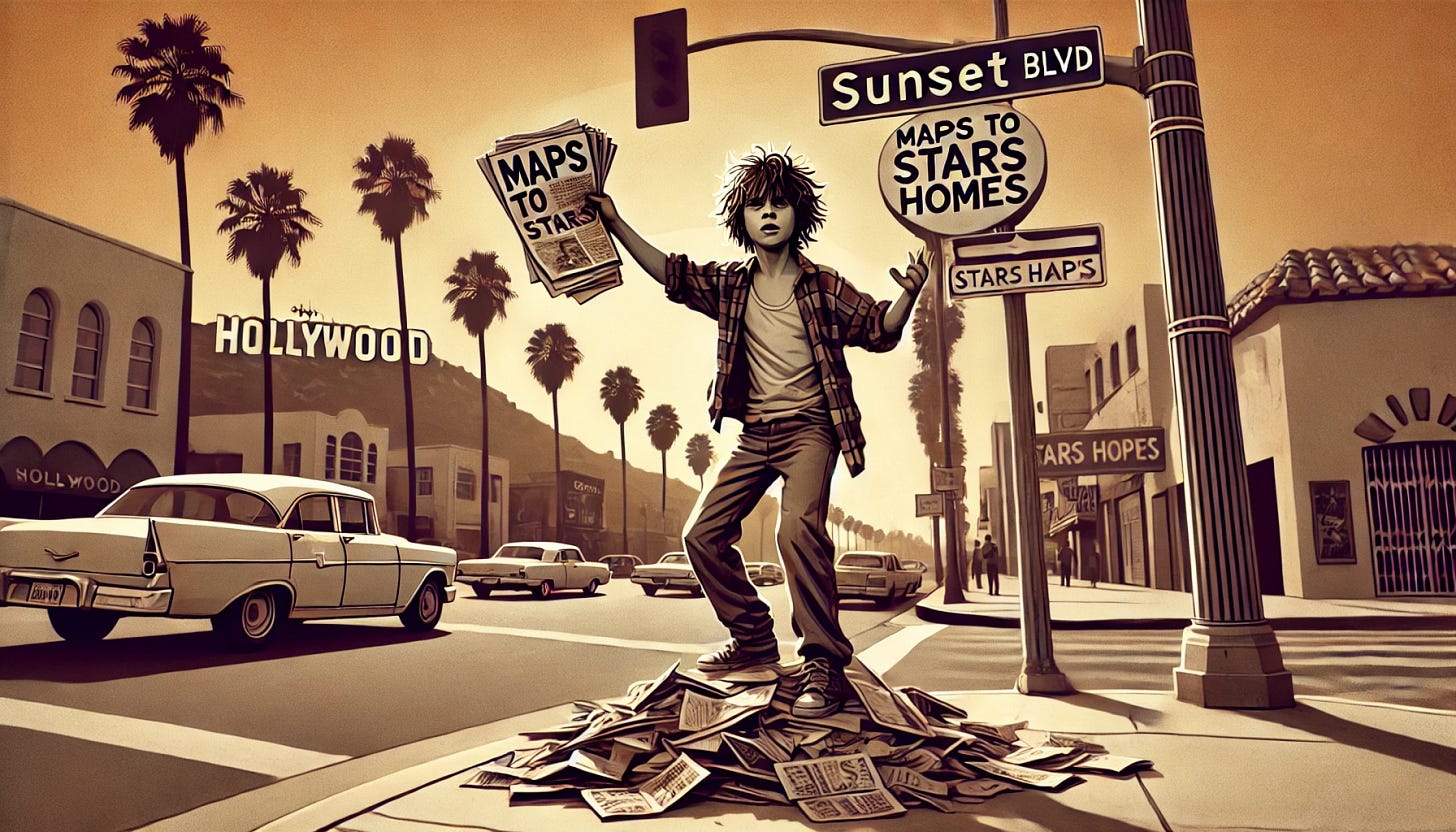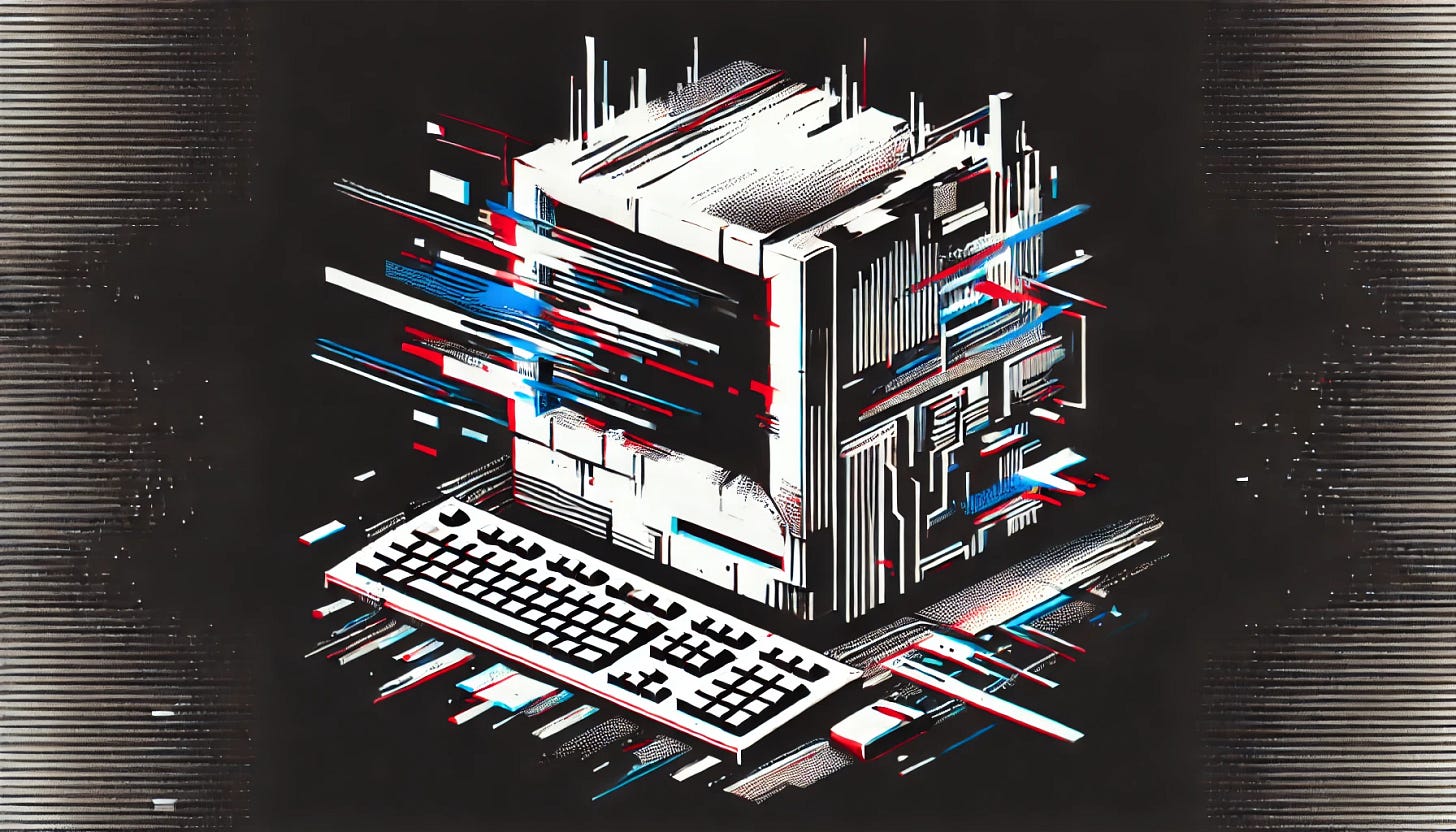Let’s get physical
A throwback story for an increasingly virtual world
Let me tell you about the first computer I laid eyes on. It was a marvel but it was not mine and I was jealous. It was Michael’s. Michael was the new kid in my 5th grade class at Gardner Street Elementary School. I knew most of the kids in my class - I started Kindergarten at Gardner Street. Michael had just appeared.
Gardner Street Elementary is cradled in the heart of Hollywood. Known for students like Michael Jackson and Famous Amos (not him, his kid), it’s a cozy little school sandwiched in a surprisingly quiet neighborhood, a block below Hollywood Boulevard - before you hit throngs of movie theaters and tourists, and a block above Sunset Boulevard - after you pass through thickets of clubs and bars. It was two blocks away from my house.
You remember that kid in elementary school that made you a little nervous? Was a bit off? You wanted to be their friend but they also kinda scared you? That was Michael.
Michael’s family rented the rundown house on the corner across the street from the playground. I walked by it everyday on my way to school. I wondered when the busted basketball hoop precariously dangling from a single heroic screw on the garage would come crashing down on the dingy Buick that lived in the driveway.
Michael’s grooming habits were, well inconsistent, and when you caught his eye under the greasy mop of dirty-blond curls, he had a crazy look.
But Michael got this computer and it was the hot topic at recess. Personal Computers - PCs - hadn’t been invented yet. The Steve’s - Jobs and Wozniak - were working hard in a garage up north somewhere on the Apple II, but it wouldn’t come out until later that year. Computers were industrial equipment holed away in the basements of business and government. They weren’t for kids. There was a growing hobbyist market, but the kits were expensive.
How did Michael, my unstable 5th grade friend rooming in the ramshackle rental, afford such a thing? Well, Michael was an entrepreneur par excellence. Part of the lucrative Maps to Stars Homes gang. Armed with a hand painted plywood sign taller than him, Michael was in the crew that manned corners up and down Sunset Boulevard selling dubious tri-fold maps revealing the secret homes of the rich and famous.
Michael’s spot was Sunset and Curson, just down the street from my house. Waving a fat yellow stack of maps, tourists would swerve over to the side of the road, pull up to Michael in wood paneled station wagons and … KA-CHING!
Michael spent his star hustle money on a single board kit. The Heathkit ET-3400 was a beaut framed in the finest chunky textured blue plastic. A tangle of chips and cables, it was crowned with 6 glowing red LED displays, each showing a single digit, mounted above a chonky hex keypad.
It had a Motorola 6800 8-bit processor, 4K of system memory (read only or ROM) and 512 bytes (!) of memory for programming (RAM). Little did I know I’d build a broken version of this a few years later.
The impromptu Gardner Street Elementary Computer Club was formed. After school we’d jam into Michaels small bedroom sprawled across the bed sharing the floor with dirty clothes and … the Heathkit ET-3400.
We’d play Lunar Lander. You were a pilot trying to land safely on the moon. We found the program in a magazine and keyed in the list of machine code. It wasn’t a lot - there’s only so much you can fit in 512 bytes!
The lander starts 500 feet above the moons surface with a full tank of gas. Gravity pulls it down at an increasing speed of 5 feet per second. You control the landers descent by entering the thrust (0-9) on the keypad. After each turn, the computer displays your resulting altitude, velocity and remaining fuel. Land safely - you win. Run out of fuel or hit the surface too fast, you crash.
When you crashed - you always crashed - all the LEDs would flash red.
That bundle of chips and wires, lights and clickety clackety keys was a wonder. It couldn’t have been more tactile, more … physical. There was no internet, there was network, there were no interfaces to other systems. Michael’s Heathkit ET-3400 existed only in his room and only for 5th graders invited in to get close enough to touch it and see the LEDs flash.
This would all change.
Once the Personal Computer went mainstream, Local Area Networks sprung up connecting PCs together with wires run over ceilings and down walls. The first one I setup was aptly named LANtastic. Mainframes and Minicomputers already had the concept of dumb terminals spread throughout a building wired together or dialed in via modems and phone lines.
Then we got the Internet and increasingly PCs and mainframes/minis were connected together via the World Wide Web.
If you wanted to network PCs together across buildings or cities, you leased a circuit from the phone company. That was your line, you paid for it. They varied by capacity and speed - T1, E3, ISDN. Since these were your lines and yours alone, they were correspondingly expensive. Then shared internet connections came on the market - they were a lot cheaper. But were they secure?
To address this question, Virtual Private Networks or VPNs were born. This is the first time I remember the term Virtual. Microsoft developed one of the first protocols to ‘tunnel’ traffic on a shared wire to ensure it was secure and isolated from the other traffic. That protocol was PPTP or point-to-point tunneling protocol. Top tier acronym.
Pee Pee Tee Pee! Peee Peee Teee Peee!! Outstanding.
With a VPN, a business could connect its offices together securely over the open internet. This became a big business line for the network integration companies I worked for a the time.
PPTP opened up a virtual Pandora’s box.
VIRTUAL: Something that exists in effect but not physically or tangibly. It is often used to describe things that are simulated, conceptual, or digital rather than physically present.
Data centers sprang up, filled with racks of servers to feed the rapacious hunger of networked PCs. With ever bigger data centers, we split up the management of hardware and software. It’s easier to standardize hardware and operating system builds - sometimes called bare metal builds - by pooling the resources software applications need to run, across a bunch of hardware.
Compute, Memory, Storage - became services, available on-demand, abstracted away from the physical machines providing them.
In this way, software complexity moved to virtual layers that could be configured and rebuilt with little effort.
So it was, and so it is. Now we have Virtual Machines or VMs. Virtual IP addresses or VIPs. Virtual Desktops or VDI. These same virtual resources are assembled by AI systems, enabling them to code and provision an app you describe with no interaction needed to build the environment to host it.
It’s gotten a little nutty - virtual reality or VR. The metaverse. It’s getting nuttier - virtual friends. AI companions.
More virtual is heading our way.
What's past is prologue, but I realize that’s too much prologue for the simple question my friend asked: Do I need a VPN?
Nope Frankie, you don’t need a VPN.
That would have been a boring article right?
Does Wirepine recommend personal VPNs? Sure, the tech is legit. Toooo legit to quit. The needs however, are fuzzier.
Are you doing sneaky things online that you want to hide from sneaky people? Then by all means get a VPN. A VPN obfuscates your location, encrypts your traffic, conceals your identity.
Frank’s use case is streaming, specifically watching sports blacked out regionally. VPN is also good for that. You want to stream some stuff available in another country? VPN is good for that too. Be sure the VPN you choose has a server in the country you want to be coming from.
Which VPN to choose? The top ones are pretty much interchangeable, so go for price. Get the two year deal. I installed Proton (free) and worked out of Japan for a few days. Other than a few websites complaining and others showing me .jp versions, everything worked just fine. Proton is based in Switzerland and claims to retain no logs of any activity. So if you’re doing sneaky things, they’ve got you covered.
Reddit has armies of passionate and paranoid people that evaluate and argue the merits of every VPN, everyday. Here’s a table they keep up to date to help you choose.
I don’t use a VPN. Go virtual when it suits you; I prefer physical.
Best, Andrew





Very cool! Loved Heathkits, and Radio Shack!
My first computers in the mid 80's
https://pau1.substack.com/p/first-computers
That's wild. In my neighborhoods, we knew there had to be that one kid who had the GI Joe aircraft carrier. That same kid had this computer back then. Not every neighborhood had such a kid.
This looks a lot like the Altair, right?